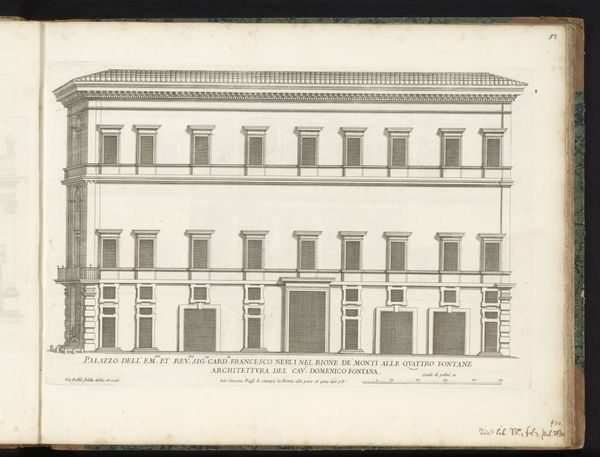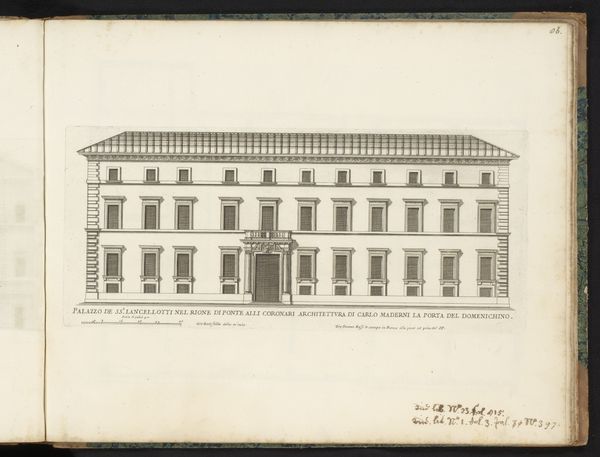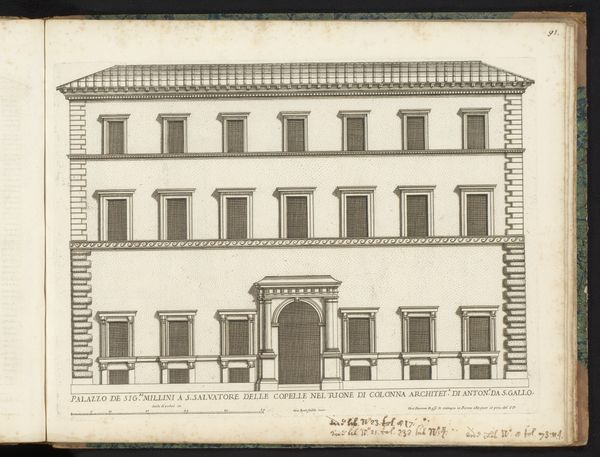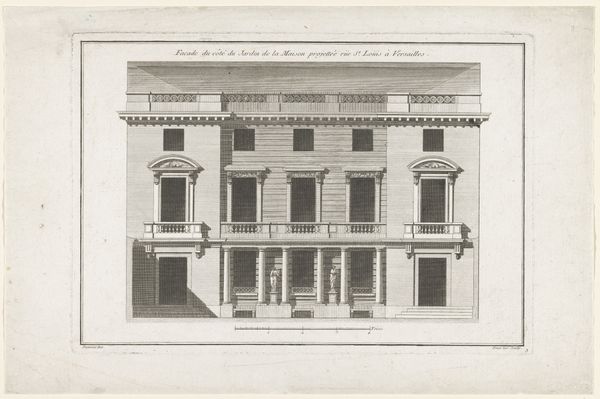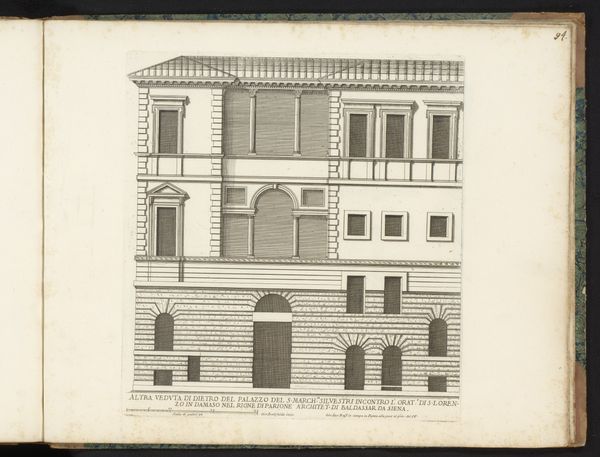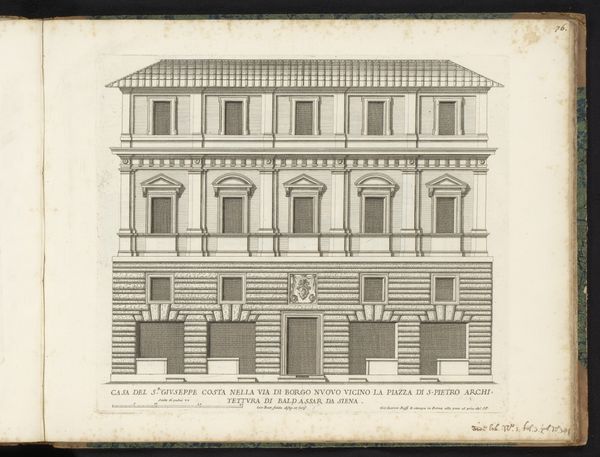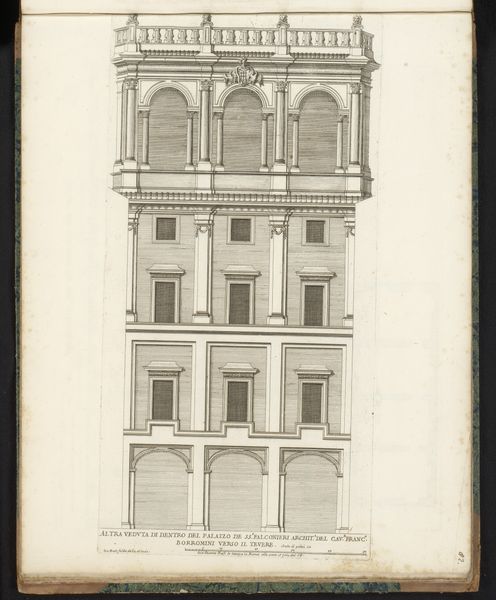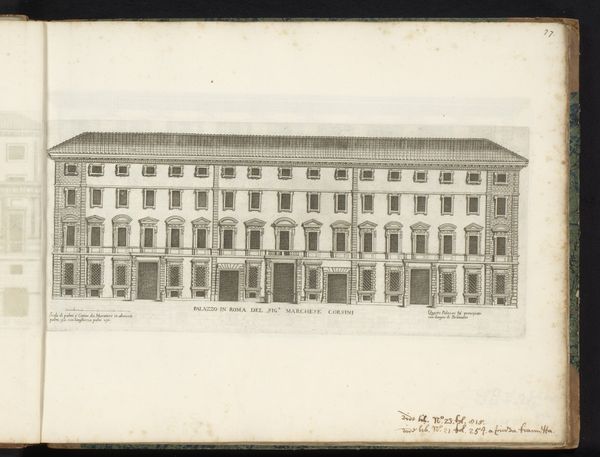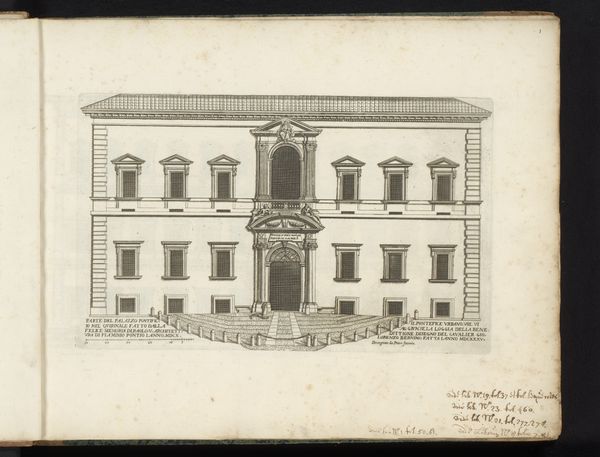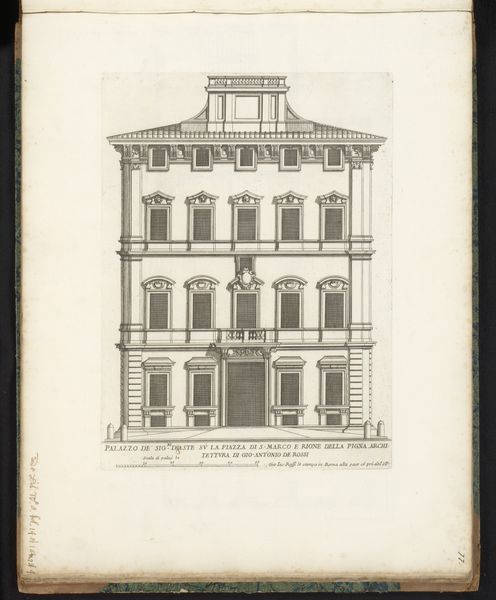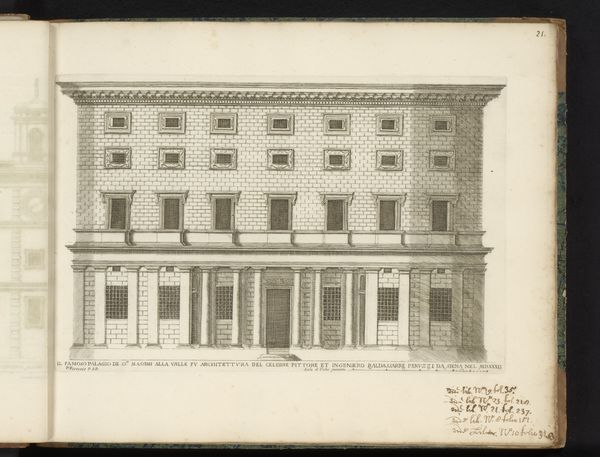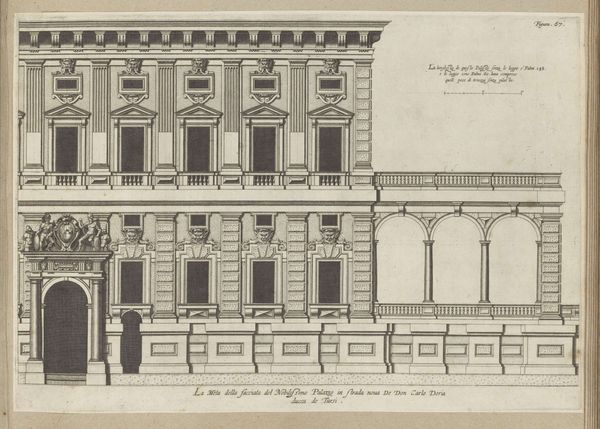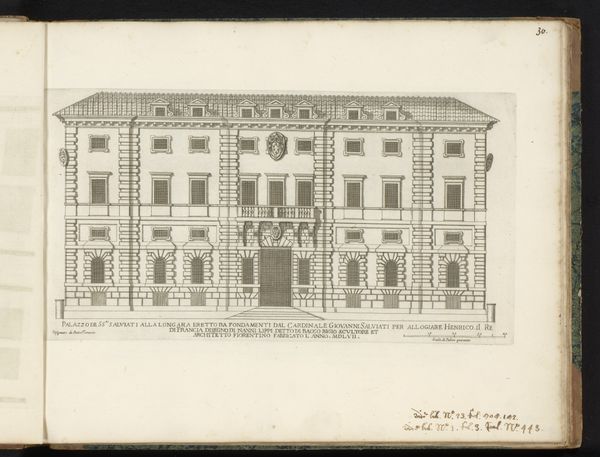
drawing, print, etching, paper, engraving, architecture
#
drawing
#
baroque
# print
#
etching
#
paper
#
cityscape
#
engraving
#
architecture
Dimensions: height 246 mm, width 285 mm
Copyright: Rijks Museum: Open Domain
Curator: Let's consider Falda's etching, "Façade van Palazzo Valentini," made after 1655. The stark lines present an almost architectural coolness. I'm curious about the labor involved in its production and the context of its consumption. What are your initial thoughts? Editor: Well, the building itself appears very structured, but the etching gives it a sense of remove. Thinking about its creation, I am wondering, what drove Falda to painstakingly produce such detailed depictions of architecture through this medium? Curator: A crucial question. We can't separate this image from its production. Falda, as an etcher and printmaker, was participating in a market economy. This print, and others like it, served as documentation and promotion of Roman architecture, a form of visual capital circulated amongst wealthy patrons and other architects. What does this tell us about architecture itself? Editor: That architecture wasn't just about creating buildings but about marketing a lifestyle and certain societal ideals! These weren't just drawings, but a form of advertisement... almost like an early form of real estate brochure. Curator: Precisely. And the very process of etching - the acid, the metal plate, the physical labor involved – distances us from the purely aesthetic appreciation of the building. The print makes visible the complex system of patronage, skill, and commerce intertwined within art production of this period. Think of the consumption and the class system tied to art back then; how does this impact the world of art today? Editor: That makes me think about who had access to these images and therefore who was influenced by them! The original drawing served as both art, but more so, advertisement to influence the architectural trends and consumption patterns of the elite, while keeping common people distanced by means of affordability and access. Fascinating! Curator: Absolutely. It encourages us to view Baroque art beyond idealized forms and consider the materiality and systems that enabled its creation and circulation. Editor: I’ll definitely be thinking about art in terms of production and social consumption from now on!
Comments
No comments
Be the first to comment and join the conversation on the ultimate creative platform.
